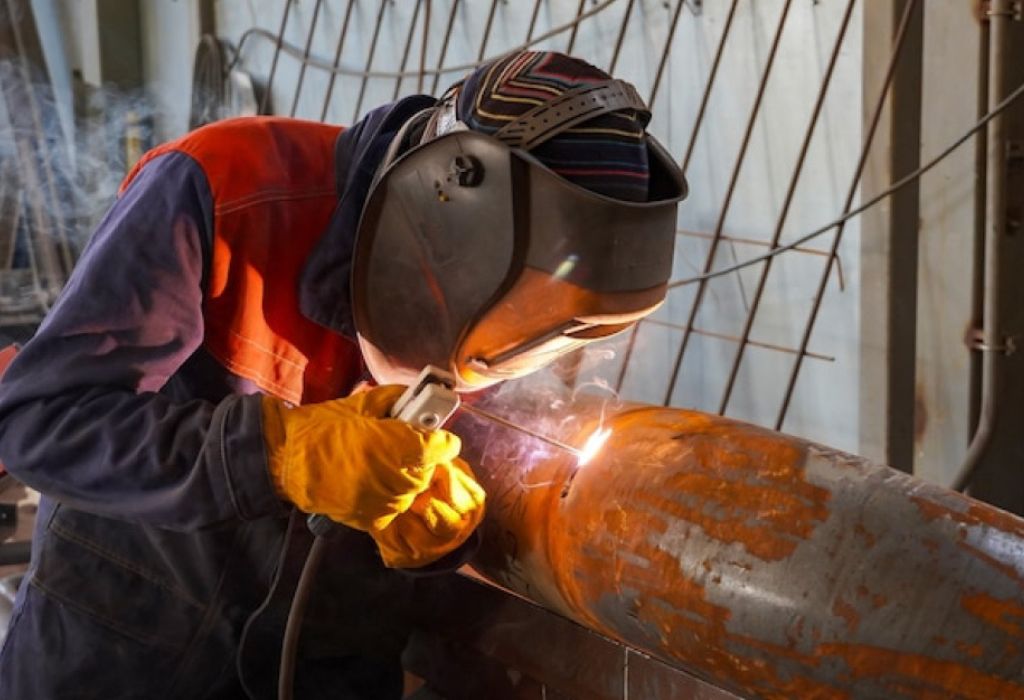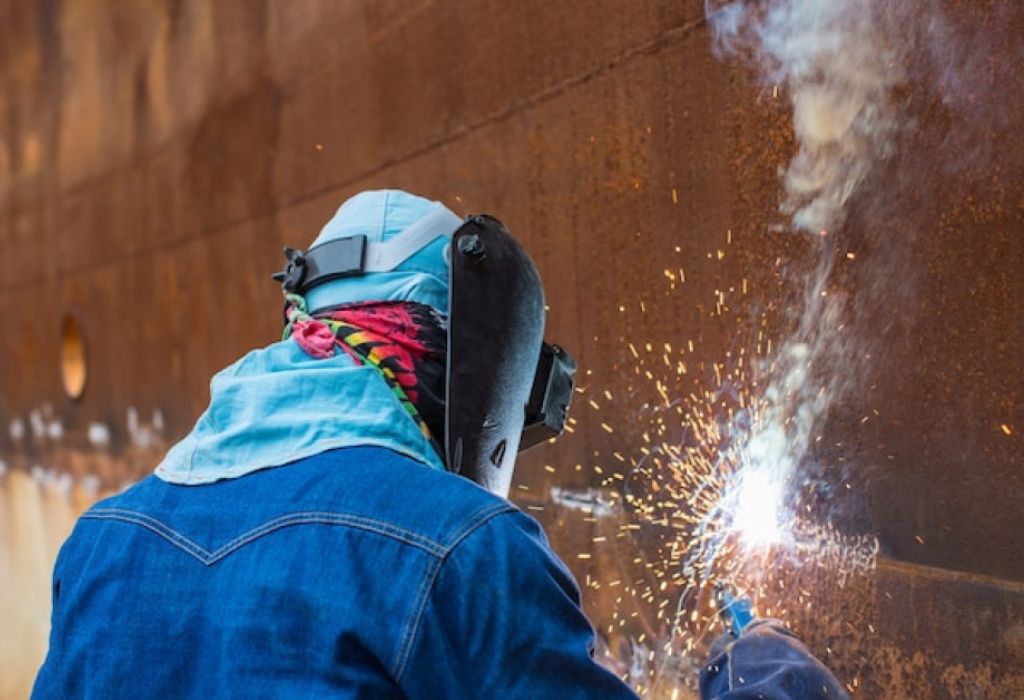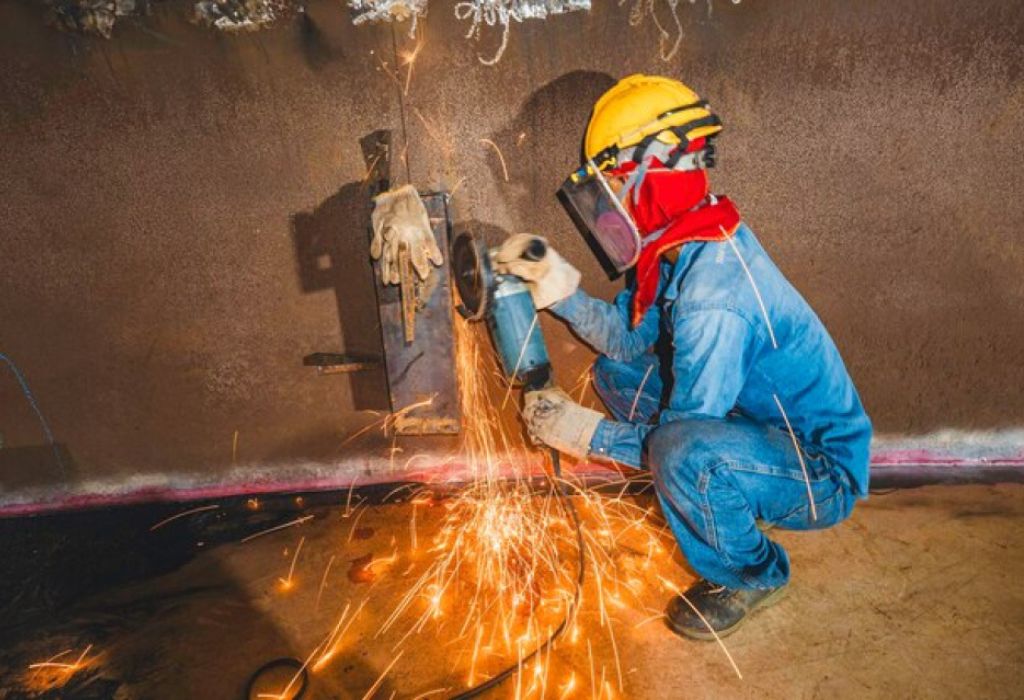On the floor of a busy fabrication shop, sparks fly as a seasoned welder passes a bend test with ease.
Across the bay, an apprentice looks on, asking the question that many beginners eventually face: how do I become a journeyman welder?
Reaching journeyman status is more than just a title. It’s a recognition that you’ve logged the hours, mastered the skills, and proven your ability to work under industry codes.
For many, it’s the step that transforms welding from an entry-level job into a lifelong career with stability and higher pay.
The path, however, requires commitment. In the United States, the traditional route follows a registered apprenticeship model that blends classroom and hands-on training.
According to Apprenticeship.gov, the standard is around 2,000 hours of on-the-job training each year along with 144 hours of related classroom instruction.
Over the span of a 3–5 year program, that adds up to 6,000–8,000 total hours of structured learning before you can hold a journey-level card.
Why take on such a demanding commitment? The rewards are clear.
Journeyman welders enjoy access to union contracts, better hourly rates, and opportunities to work across industries like construction, shipbuilding, and energy.
Skilled welders remain in high demand, with labor projections pointing to steady openings as older tradespeople retire and new infrastructure projects ramp up.
What “Journeyman Welder” Really Means

The term journeyman has deep roots in the skilled trades. In welding, it refers to someone who has completed a structured apprenticeship, demonstrated code-level proficiency, and earned recognition as a fully qualified craftsperson. Unlike a beginner or helper, a journeyman welder is trusted to perform independently on critical projects.
It’s important to note that “journeyman” is not a universal license but a status granted by employers, unions, or state-recognized apprenticeship programs. In some regions, the title may be tied to wage scales within collective bargaining agreements. In others, it represents completion of specific training milestones and performance qualification tests.
What makes this status valuable is the combination of training and proof of skill. A journeyman welder has not only logged thousands of hours in on-the-job training but also passed welder performance qualification (WPQ) tests aligned with industry codes such as AWS D1.1 for structural steel or ASME Section IX for pressure piping.
Common Questions
Is “journeyman welder” a license?
No, it’s a skill status achieved through apprenticeship and code qualification.
Do all states use the title?
No, usage varies by region, employer, and union agreements.
Is CWI required to be journeyman?
No, Certified Welding Inspector is a separate inspection credential.
Can experience substitute for apprenticeship?
Sometimes, but most employers prefer documented apprenticeship hours.
Does pay increase at journey status?
Yes, wage scales typically peak once a welder reaches journey-level recognition.
Step 1 — Meet Basic Requirements
Before beginning the path toward journeyman status, certain baseline requirements must be met. Most programs expect applicants to hold a high school diploma or GED, as this ensures readiness for math, reading, and blueprint interpretation. Strong foundational skills in algebra and measurement make it easier to handle welding calculations and tolerances.
Physical readiness is just as important as academic preparation. Welding demands the ability to work in confined spaces, at heights, and in hot environments while wearing protective gear. Good vision, including the ability to distinguish color changes in metal and arcs, is highly valued. Many programs also require passing a drug test and maintaining a clean safety record.
While prior experience isn’t always necessary, having some hands-on familiarity—whether through shop classes, trade school exposure, or part-time work—can make apprentices more competitive. A valid driver’s license is also frequently required, especially for jobs that involve travel between job sites.
Common Questions
Do you need a high school diploma?
Most apprenticeships require at least a diploma or GED.
What subjects are most useful?
Math, blueprint reading, and basic metallurgy provide a strong foundation.
Is color vision important?
Yes, it helps with bead inspection and heat tint evaluation.
Can previous trade experience help?
Yes, it often shortens the learning curve.
Is a driver’s license required?
Frequently, since many job sites expect welders to be mobile.
Step 2 — Choose a Path: Trade School, Union, or Direct-Hire Apprenticeship
There are multiple routes into welding, and your choice affects how you reach journeyman status. Community colleges and trade schools offer welding diplomas or associate degrees, often in partnership with local employers or unions. These programs provide structured training and help place students into apprenticeships.
Unions remain one of the strongest avenues into the trade. Through a local union, applicants can access registered apprenticeships that combine classroom study, mentorship, and paid jobsite experience. Union programs also come with benefits such as healthcare, pension plans, and standardized pay scales.
Another option is direct-hire apprenticeships through contractors or fabrication shops. These roles allow you to earn while you learn, with the employer acting as sponsor for your apprenticeship. The drawback is that benefits and training structure vary more than in union programs.
Common Questions
Which is fastest?
Direct-hire can start sooner, but union programs are more structured.
Do colleges place apprentices?
Many schools partner with sponsors and local unions.
Do apprentices get paid?
Yes, registered apprenticeships are paid positions.
Can military experience count?
Yes, credit is often given for prior service-related welding.
Are night classes available?
Often, to accommodate work schedules.
Step 3 — Understand Time & Classroom Requirements
Apprenticeships are designed around a time-based model. The standard is about 2,000 hours of on-the-job training (OJT) each year plus 144 hours of classroom instruction, usually lasting between 3 and 5 years.
Some programs follow a competency-based or hybrid approach, where progression depends on demonstrated skill rather than strictly hours logged. Still, most welding apprenticeships emphasize time-based tracking to ensure consistency across trainees.
During classroom instruction, apprentices cover welding theory, safety, metallurgy, math, and blueprint reading. On-the-job training focuses on mastering welding processes, positions, and code compliance under the guidance of a journeyman or foreman.
Common Questions
What’s in related instruction?
Safety, process theory, metallurgy, and code requirements.
How are hours tracked?
Sponsors log OJT, while schools record classroom attendance.
What if hours fall short?
Apprentices may need to extend their program to catch up.
Can credits count toward a degree?
Yes, many community college programs allow credit transfer.
Can prior experience reduce hours?
Sometimes, with sponsor approval.
Step 4 — Master Core Welding Processes
A journeyman welder is expected to be versatile across several welding processes. The most common are SMAW (stick), GMAW (MIG), GTAW (TIG), and FCAW (flux-core). Each has specific applications: stick welding for structural steel, MIG for production work, TIG for stainless and aluminum, and flux-core for heavy fabrication.
Beyond mastering processes, apprentices must demonstrate proficiency in different welding positions—flat, horizontal, vertical, and overhead. These are often labeled as 1G through 6G for groove welds and 1F through 4F for fillet welds. Employers value welders who can perform in all positions, especially for pipe welding.
Hands-on practice with cutting, grinding, and fitting is also critical. Being able to prepare joints properly and finish welds cleanly is just as important as running a strong bead.
Common Questions
Which process comes first?
SMAW or MIG, since they build core skills.
Is TIG welding required?
Often, especially for stainless steel and aluminum.
What are welding positions?
Designations like 3G or 6G that define the angle of the weld.
Do all welders learn every process?
Most journeyman welders learn at least three.
Which pays more?
Pipe welding with TIG or 6G qualifications usually commands the highest rates.
Step 5 — Get Qualified to Industry Codes

Becoming a journeyman welder requires proving skill through Welder Performance Qualification (WPQ) tests. These tests are based on industry codes such as AWS D1.1 for structural steel, ASME Section IX for piping, and API 1104 for pipelines.
During testing, welders prepare coupons according to a Welding Procedure Specification (WPS). The coupons are then inspected visually and tested through destructive or nondestructive methods, such as bend tests or X-ray inspection. Passing these tests certifies that the welder can perform to the code requirements.
Employers typically require welders to test for the specific materials and positions relevant to the job. Certificates must be maintained through continuity logs, which show that the welder has used the process regularly.
Common Questions
Do school certificates equal code quals?
No, employers require job-specific tests.
How long is a qualification valid?
As long as continuity is maintained per code.
Can one test cover many jobs?
Only within the limits of the essential variables.
Who signs off on the WPQ?
Employers or authorized inspectors.
Is 6G pipe the hardest test?
Yes, it’s considered one of the most challenging and valuable.
Step 6 — Build Safety & Compliance Habits
Safety is a cornerstone of the welding trade, and journeyman welders are expected to model good practices. Most apprentices earn OSHA-10 or OSHA-30 certifications, which cover construction safety basics.
Welders also receive training in hot work permits, confined space entry, and fire prevention. Personal protective equipment (PPE) like helmets, respirators, and gloves must always be used properly. In industries like stainless welding, respirators are critical due to hazardous fumes such as hexavalent chromium.
A strong safety record not only protects health but also improves employability. Many contractors prefer welders with documented safety training and incident-free work histories.
Common Questions
Is OSHA-10 mandatory?
Often required for site access.
Do I need a respirator?
Yes, in certain welding environments.
Who provides PPE?
Employers may, but owning quality gear is recommended.
What is a hot work permit?
A required authorization for welding in flammable areas.
Do welders need medical exams?
Some jobs require fit tests and physicals.
Step 7 — Pass Bend Tests and NDT
Testing is the gateway to becoming a journeyman welder. One of the most common is the guided bend test, which checks weld ductility and soundness. In this test, weld coupons are bent to expose any cracks or defects.
Non-destructive testing (NDT) methods like radiographic testing (RT) and ultrasonic testing (UT) are also widely used. These techniques verify weld quality without damaging the part. Passing these tests is critical for qualifying to codes and securing higher-paying positions.
Preparation and practice are key. Apprentices are trained to follow WPS instructions carefully, control heat input, and maintain consistent bead quality. Even tack welds are inspected, so attention to detail matters at every step.
Common Questions
Which is harder, plate or pipe tests?
Pipe tests, especially in the 6G position.
How many coupons are tested?
Depends on the code and process.
Who pays for retests?
Policies vary; sometimes the welder, sometimes the employer.
Do tack welds count?
Yes, they’re inspected as part of the test.
What causes most failures?
Lack of fusion, slag inclusions, and undercut.
Step 8 — Document Hours and Qualifications
Keeping accurate records is essential to achieving journeyman status. Apprentices must track their OJT hours, classroom instruction, and code qualifications. Employers and training sponsors often require signed logs to verify progress.
A professional portfolio should include Welding Procedure Qualification Records (WPQRs), continuity logs, and copies of performance qualifications. Digital backups are recommended to prevent loss.
These records are valuable for career advancement. When moving to new jobs or contractors, having a clear history of training and qualifications speeds up the hiring process and wage negotiations.
Common Questions
Which records matter most?
WPQs, continuity logs, and OJT hours.
Should I keep paper or digital copies?
Both, with cloud storage for backup.
What if records are lost?
Contact your sponsor or previous employers.
Do letters from foremen help?
Yes, they provide credibility.
Can soft skills be added?
Yes, teamwork and leadership notes add value.
Step 9 — Land Journey-Level Work and Advance

After completing the apprenticeship and testing, welders can apply for journeyman positions. These roles often come through union halls, contractors, or fabrication shops. Industries with high demand include construction, shipbuilding, energy, and pipeline work.
At this stage, pay rates increase significantly. Journeyman welders may also qualify for per diem pay when traveling, overtime on shutdowns, and specialized rates for high-skill code welding. The combination of mobility and pay makes journeyman status highly rewarding.
Continuing education remains important even after reaching journey level. Many welders go on to earn additional code qualifications, endorsements, or certifications such as CWI (Certified Welding Inspector) to expand career options.
Common Questions
Where are the most jobs?
Construction, shipyards, refineries, and pipelines.
Union or non-union?
Both offer opportunities, with unions providing more structure.
How can I stand out?
Multiple code qualifications and a strong safety record.
Is travel required?
Often, especially for large industrial projects.
What’s the next step after journeyman?
Many welders advance into inspection or supervisory roles.
Conclusion
Becoming a journeyman welder requires dedication, time, and proof of skill. The journey combines 6,000–8,000 hours of training, code-level testing, and safety compliance, but the reward is a respected career with excellent earning potential.
The steps are clear: meet basic requirements, enter an apprenticeship, master core processes, pass code tests, and keep your records in order. By following this structured path, anyone committed to the trade can earn the title and the opportunities that come with it.
For those asking, how do I become a journeyman welder, the answer is simple: invest the hours, embrace the training, and weld your way to a future of steady work and professional recognition.

I’m Darrell Julian, the founder, lead writer, and hands-on welding enthusiast behind ArcWeldingPro.com. With more than 15 years of real-world welding experience, I created this platform to share what I’ve learned in the field, in the shop, and in the heat of the arc.


